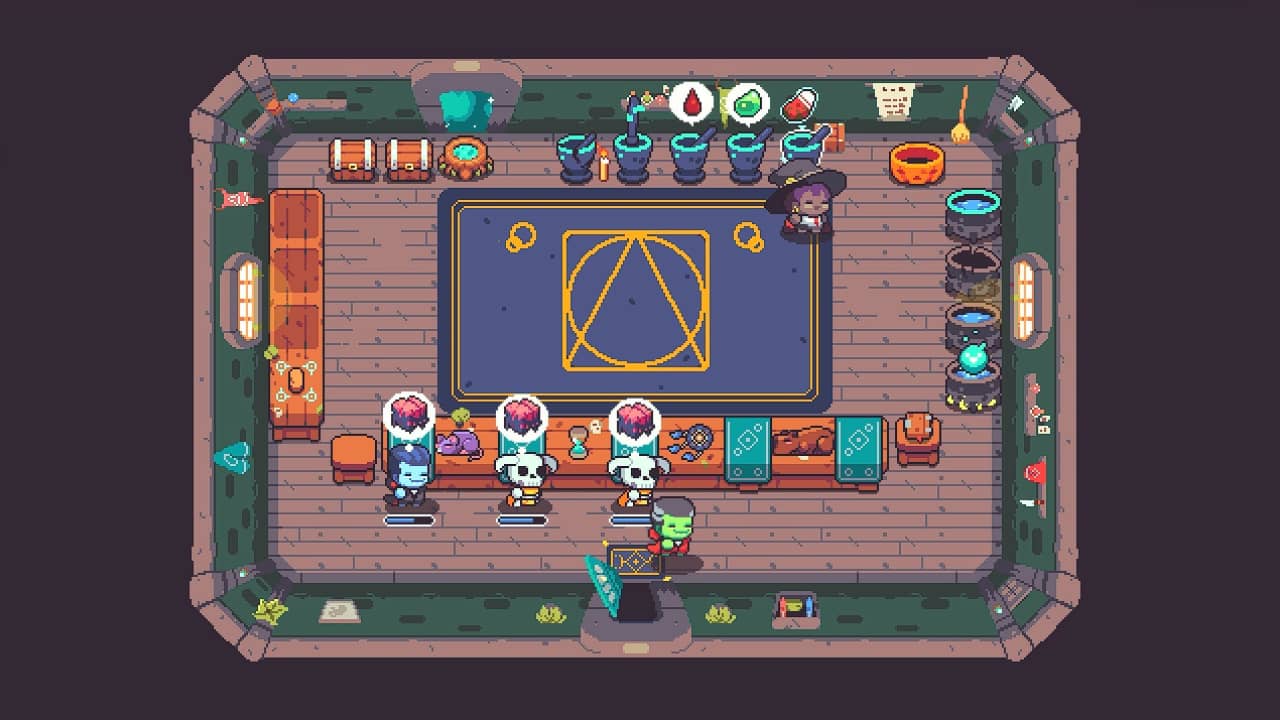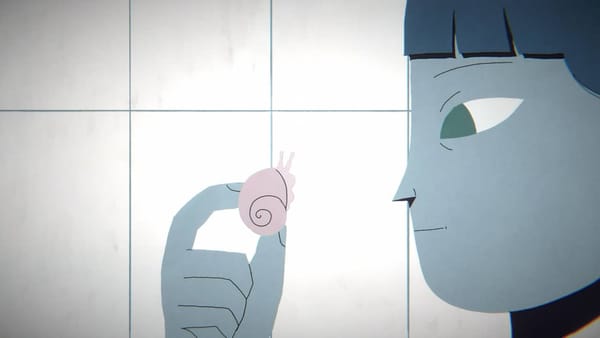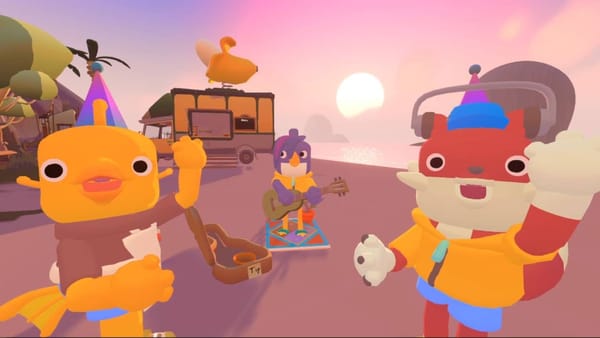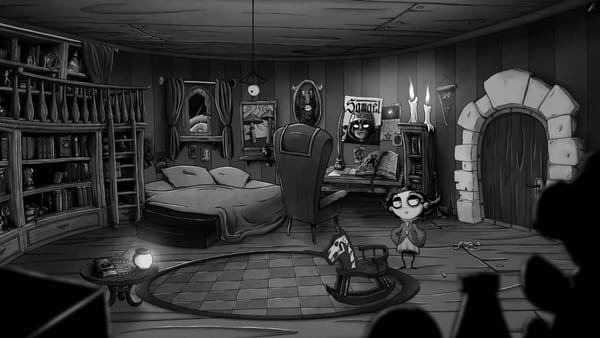Tiny Witch, from Creative Hand, is such an itsy, bitsy, teeny game that you can’t help but fall in love with it from the get-go. It’s not just the title that’s small, but the play area, concepts, and… just about everything. Size doesn’t matter.
Getting my head around the game was the first step. Apparently, our lil’ witch keeps buying shops that have been cursed. When first reading this, it sounded absurd. Who frequently buys property this way? Surely she’s not a property developer? Regardless, our hero has made her bed, so now she must sleep in it. The bed in question is the actual shop.
This is how Tiny Witch works: You automatically purchase a shop but can only leave once you have fulfilled ten full working days until the curse lifts. Put aside food, drink and rest: what’s important here is multitasking.

Tiny Witch Review (PC)
Tiny Witch gameplay follows the same fluidity as a game like Overcooked, but aesthetically, it is more on par with the excellent Potion Party. The witch will man the fort, serving a multitude of dungeon masters as they pop into the establishment for a minion or two.
Sorry, what?
The items in question are things like zombies and skeletons, and you will basically bake up the recipe and serve it to the customer before they kick off and leave. The faster you serve them, the happier they are and the bigger the tip. Unhappy customers will walk, meaning you might not hit the daily target of earnings.
A minion is created by taking a soul, cooking it in your cauldron, mixing it with another one, or fusing it with a soul that’s been put through a bespoke mortar and pestle. The elements are combined on a workbench, you press a button, and they fuse into a magic cube that you hand over to the customer, then on to the next.
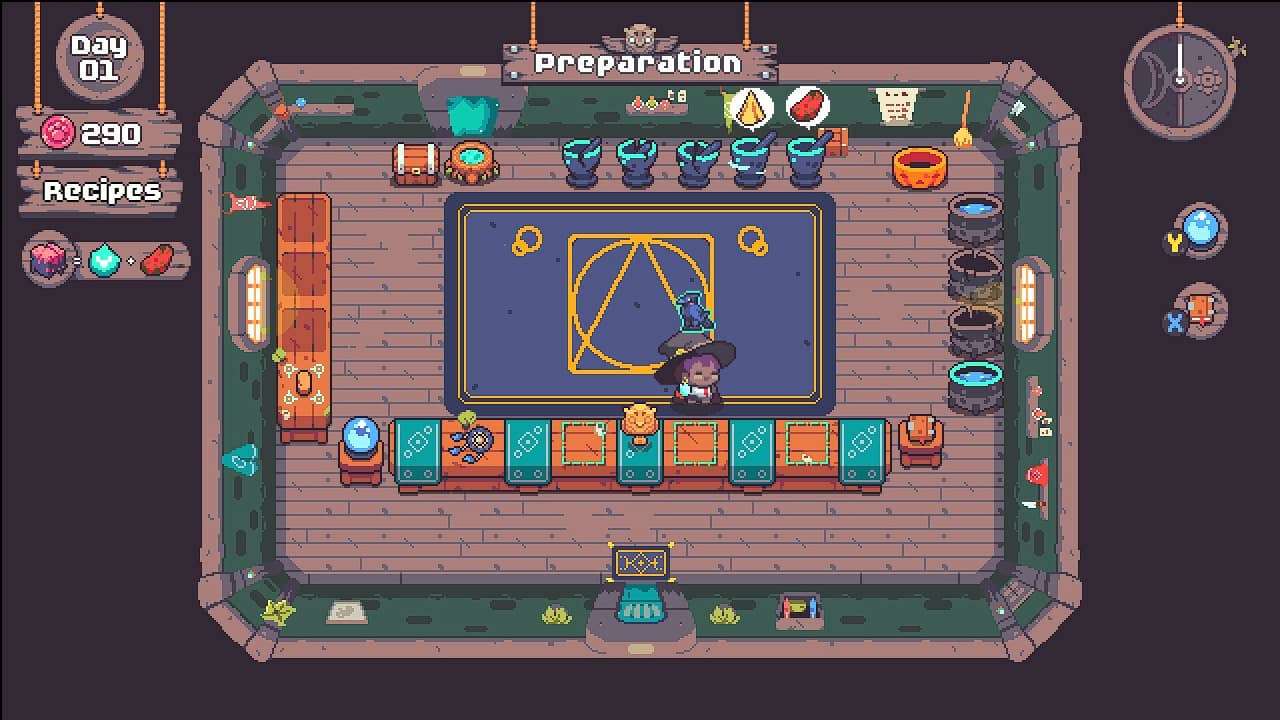
The Customer Isn’t Always Right
Imagine where the challenge comes from in Tiny Witch? It’s the juggling of customers and ingredients. Items can be burnt and discarded, disgruntled customers may hurl objects at you that impede your movement, or perhaps there are leaky pipes that slow you down.
Between rounds, split into a day/night cycle; you can often invest in new gear such as cauldrons to cook more, specialist tools, or even decorate the place and add pets. This isn’t solely cosmetic as depending on what part of the counter you place it; it’ll affect that particular customer, i.e. get them to tip more or perhaps be more patient.
Tiny Witch differs from other titles because you can interact with the customers and sweet-talk them so they don’t leave – sometimes reversing their decision to tip. It’s a nice addition and ensures you’ll hit your daily target. Mostly. Customers can differ by being impatient, paying more, and, of course, the typical punter who’s much more patient than real-life Johny Public.
Verdict
The difficulty curve in Tiny Witch is well-balanced but slightly more forgiving than most games of this ilk. Movement can feel clumsy and sluggish, what with you being restricted to four directions, but it makes up for it in charm. That classic “one more day” ends up being a mantra, and it can be hard to put down, even if it’s somewhat repetitive.


